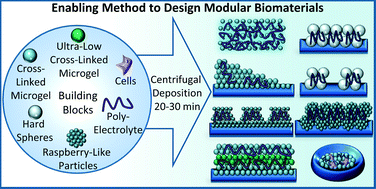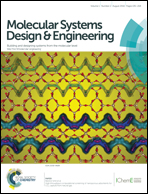Enabling method to design versatile biomaterial systems from colloidal building blocks†
Abstract
Development of materials with fine spatial control over topographical, mechanical, or chemical features has been investigated for a variety of applications. Here we present a method to fabricate an array of polyelectrolyte constructs including two-dimensionally and three-dimensionally patterned assemblies using both compressible and incompressible colloidal building blocks. This method eliminates prior constraints associated with specific chemistries, and can be used to develop modular, multi-component, patterned assemblies. In particular, development of constructs were investigated using microgels, which are colloidally stable hydrogel microparticles, polystyrene (PS) beads, and PS-microgel core–shell building blocks in conjunction with the polycation poly(ethyleneimine) (PEI). The topography, mechanical properties, and microstructure of these materials were characterized via bright field microscopy, laser scanning confocal microscopy, atomic force microscopy (AFM), and AFM nanoindentation. Cellular studies demonstrate that such patterned film constructs can be used as model systems to investigate and direct cellular adhesion and spreading. Finally, this fabrication method is expanded to develop bulk polyelectrolyte gels that can be used to develop cell-laden gels.


 Please wait while we load your content...
Please wait while we load your content...